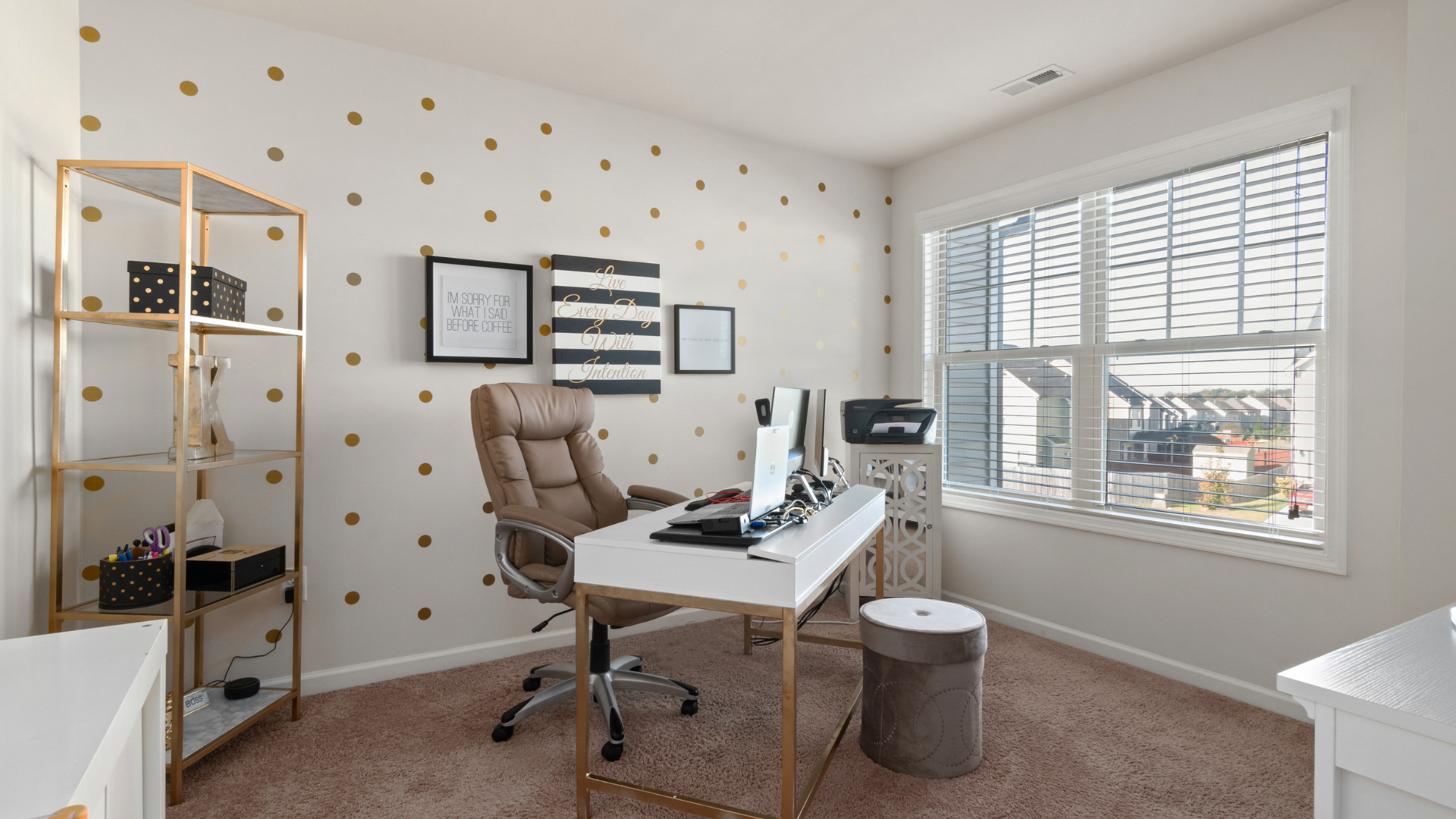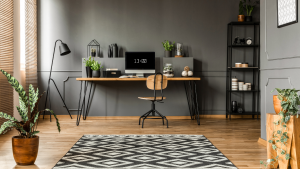Creating a home office that enhances productivity is essential in today’s work environment. Many individuals find that their workspace can significantly impact their focus and efficiency. By implementing specific design elements, one can cultivate an atmosphere that fosters motivation and concentration.
The right layout, lighting, and organizational tools play crucial roles in setting up a productive home office. Ergonomic furniture, natural light, and a clutter-free environment can lead to improved performance and reduced fatigue. Incorporating personal touches while maintaining functionality is key to ensuring the workspace remains inviting yet purposeful.
Establishing boundaries between work and personal life is also vital. It can be achieved through design choices that create a distinct separation between different activities. With these considerations, anyone can transform their home office into a powerful tool for productivity.
Optimizing Office Layout for Maximum Productivity
Creating an efficient office layout is crucial for enhancing productivity. The right workspace location, inspiring design, and effective use of available space are key components to consider.
Choosing the Right Workspace Location
Selecting an appropriate location for a home office greatly impacts productivity. Ideally, the workspace should be in a quiet area of the home, away from distractions. Natural light is beneficial, as it boosts mood and enhances focus.
A dedicated room is preferable, but if space is limited, a corner in a less-trafficked area can suffice. Ensuring good ventilation and comfortable temperature control also contributes to a conducive work environment.
Designing an Inspiring Layout
An inspiring office layout fosters creativity and focus. Start with ergonomic furniture, such as an adjustable chair and desk, to promote comfort during long work hours. Position the desk to face a window if possible, which can create a positive atmosphere.
Incorporating personal touches, like artwork or plants, can enhance motivation. A clutter-free workspace is essential; use organizers or storage solutions to keep the area tidy.
Maximizing Space and Efficiency
Effective space management enhances functionality. Use vertical storage solutions to free up floor space, allowing for maneuverability. Consider modular furniture that can adapt to changing needs.
Establish specific zones for tasks, such as a dedicated area for computer work and another for brainstorming or meetings. Utilizing multi-functional furniture can also improve efficiency and promote a seamless workflow.
Essential Home Office Furniture and Equipment
Choosing the right furniture and equipment can significantly enhance productivity in a home office. Key components include ergonomic chairs and desks, standing desk options, and elements that optimize comfort and functionality.
Selecting Ergonomic Chairs and Desks
Ergonomic chairs and desks are vital for long hours of work. An ergonomic chair provides lumbar support, helping to reduce back pain and discomfort. Look for chairs adjustable in height, armrests, and backrest angle.
Desks should accommodate various tasks and allow for proper posture. A desk height between 28 to 30 inches is standard. Consider a desk with a spacious surface to hold a monitor, keyboard, and other essential items without clutter.
Key features to prioritize:
- Adjustability: For both chairs and desks.
- Quality: Sturdy materials ensure durability.
- Comfort: Cushioned seating aids prolonged use.
Incorporating Standing Desk Options
Standing desks are gaining popularity for their potential health benefits. They allow users to alternate between sitting and standing, promoting movement throughout the day.
A height-adjustable standing desk is ideal, enabling seamless transitions. Users can customize the height according to their preference, thus preventing strain.
Considerations when choosing a standing desk:
- Stability: Ensure the desk remains sturdy when raised.
- Size: A larger surface supports multiple devices comfortably.
- Ease of use: Mechanisms should allow quick adjustments.
Optimizing for Comfort and Functionality
Creating an efficient workspace involves selecting accessories that enhance comfort and functionality. An ergonomic keyboard and mouse can minimize strain on wrists.
Cable management solutions keep the workspace tidy and prevent distractions.
Lighting is also crucial. Natural light boosts mood and focus, but task lighting should be adjustable to reduce glare on screens.
Additional elements to enhance the workspace:
- Desk organizers: Keep essentials within reach.
- Plants: Introduce greenery to improve air quality and aesthetics.
- Soundproofing: Use rugs or wall panels to reduce noise disturbances.
Each component contributes to an organized and productive home office environment.
Lighting, Organization, and Distraction Management
Effective lighting, strategic organization, and distraction management are critical for enhancing productivity in a home office. Each aspect plays a significant role in creating an environment that fosters focus and efficiency.
Leveraging Natural Light and Task Lighting
Natural light boosts mood and energy levels. Positioning the desk near windows maximizes exposure to sunlight. It is essential to consider orientation; south-facing windows provide ample light throughout the day.
Task lighting complements natural light, especially for detailed work. Use adjustable desk lamps with bright, focused beams to reduce eye strain. Consider LED bulbs, as they offer various brightness levels and energy efficiency. Combining these lighting types helps create a balanced, inspiring workspace.
Maintaining a Clutter-Free Workspace
A clutter-free workspace directly impacts concentration and productivity. Begin by decluttering regularly and keeping only essential items within reach. Utilize organizers to store supplies effectively.
Employ storage solutions like shelves, filing cabinets, and drawer organizers. Label items for easy access and efficient categorization. A clear desk minimizes distractions and allows for a more focused work environment.
Reducing Distractions for Better Focus
Identifying distractions is crucial for maintaining concentration. Start by turning off non-essential notifications on devices. Setting specific work hours can also help limit interruptions.
Additionally, consider design elements that promote focus. Color choices affect mood; calming colors like soft blues or greens can create a serene atmosphere. Effective soundproofing, such as carpets or curtains, can also reduce noise distractions.
Utilizing Headphones and Technology
Headphones can significantly enhance concentration in a busy home environment. Noise-canceling options are effective for blocking out background noise. Alternatively, listening to instrumental music or sounds can help create a productive ambiance.
Integrating technology into the workspace adds further benefits. Productivity apps can assist in managing tasks and reminders. Tools like digital calendars and time trackers enhance organization, helping maintain focus throughout the workday.
Technology and Tools for a Productive Home Office
A well-equipped home office enhances productivity. Key components include robust internet connectivity, effective document management solutions, and essential remote work tools tailored to the individual’s needs.
Ensuring High-Speed Internet and Connectivity
High-speed internet is foundational for any home office. It supports video conferencing, smooth file uploads, and quick access to online resources. A reliable connection minimizes interruptions and enhances overall efficiency.
To optimize internet performance, consider upgrading the router and positioning it for maximum coverage. A mesh Wi-Fi system can eliminate dead spots, allowing seamless connectivity throughout the workspace. Regular speed tests help ensure the internet service provider meets stated performance levels.
Implementing Document Management Solutions
Document management software streamlines workflows and reduces clutter. Tools like Google Drive, Dropbox, or Microsoft OneDrive allow for easy file storage and sharing. They help keep documents organized and accessible from any device.
Setting up a proper file structure is essential for efficiency. Use folders and consistent naming conventions. Automating document management tasks can save time and prevent errors, promoting a smoother work process.
Integrating Remote Work Essentials
Remote work essentials encompass a range of tools that facilitate communication and collaboration. Applications like Zoom, Slack, and Microsoft Teams enable quick interactions and maintain team cohesion.
Ergonomic equipment also plays a crucial role. Laptops or monitors positioned at eye level help prevent strain. Adjustable desks can promote movement and comfort throughout the day. Investing in quality peripherals, such as a reliable webcam and microphone, ensures professional interactions.
By prioritizing technology and tools, productivity in a home office can significantly improve.




